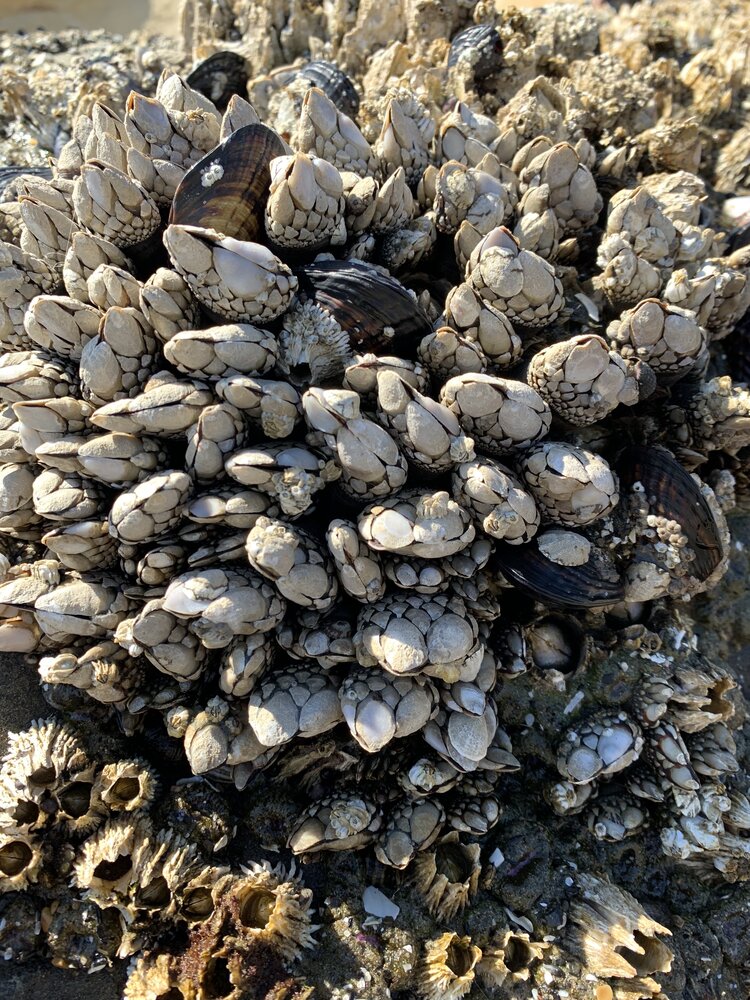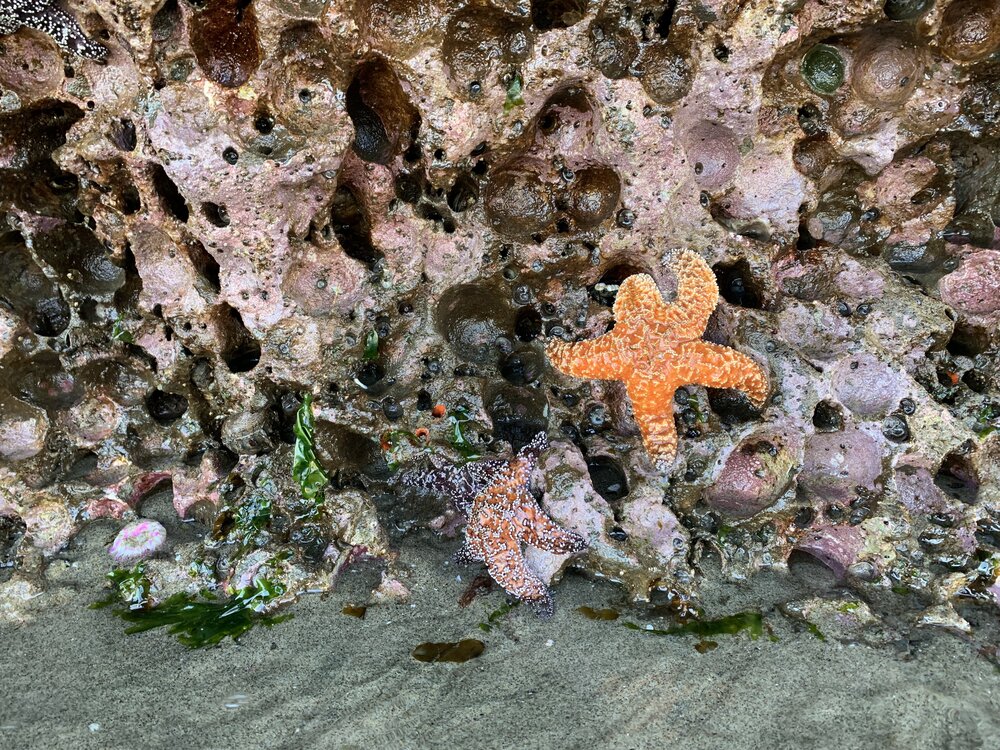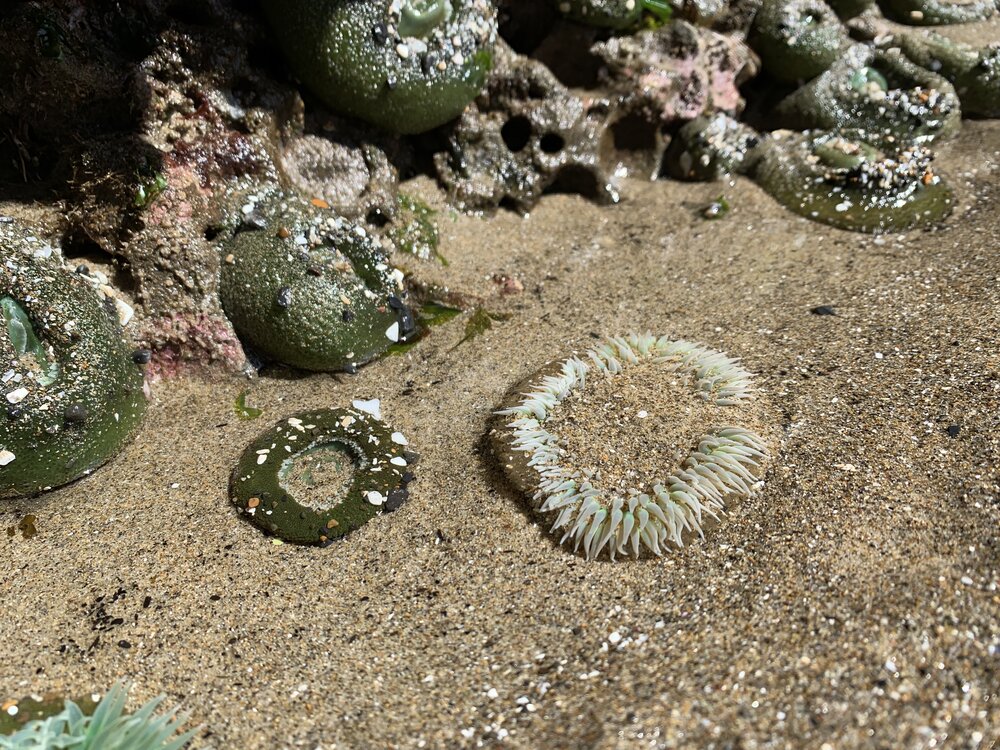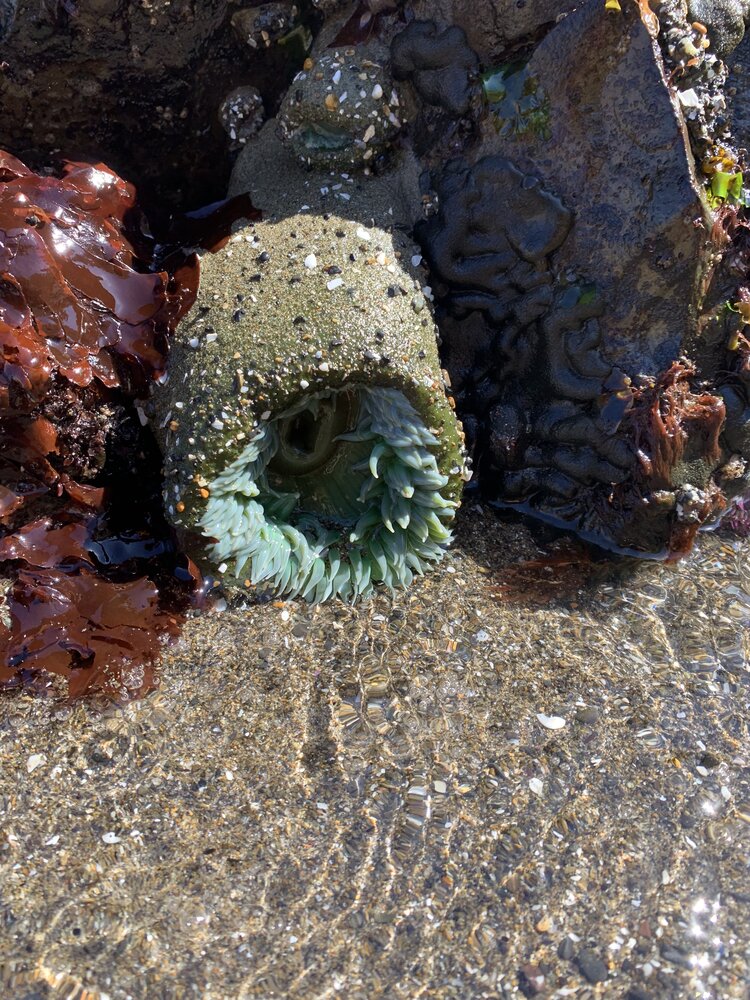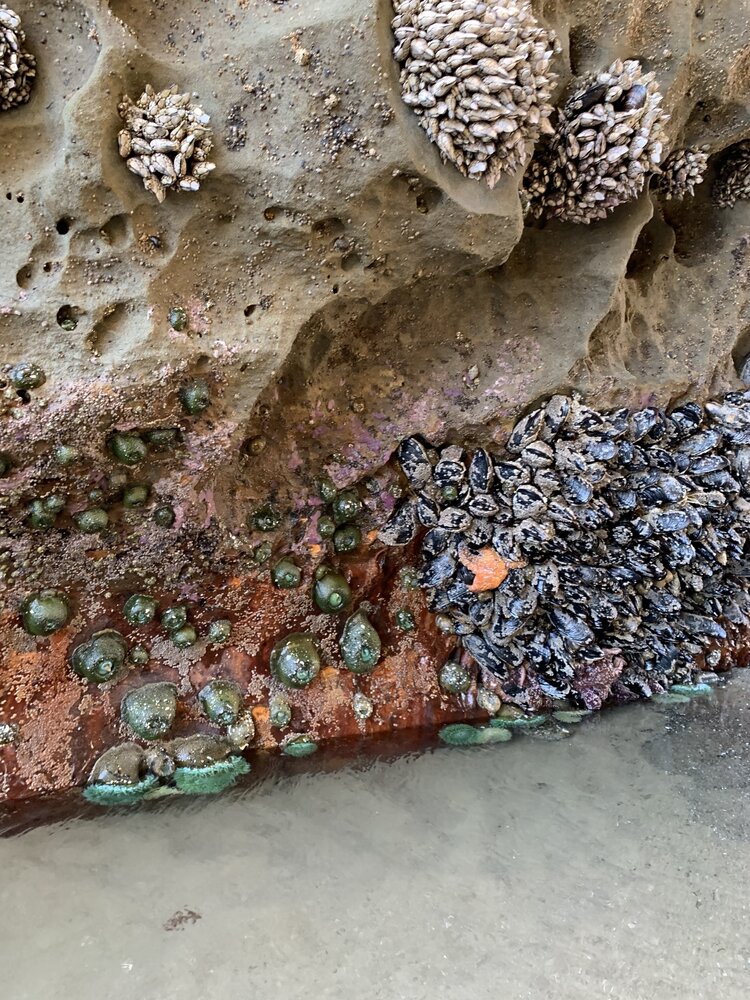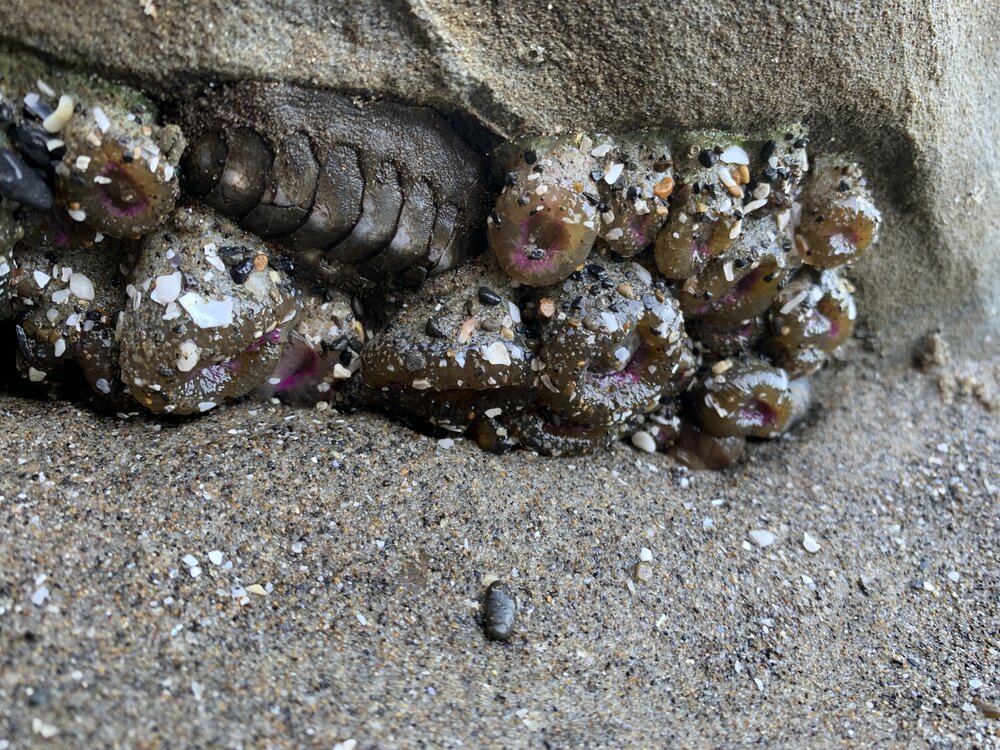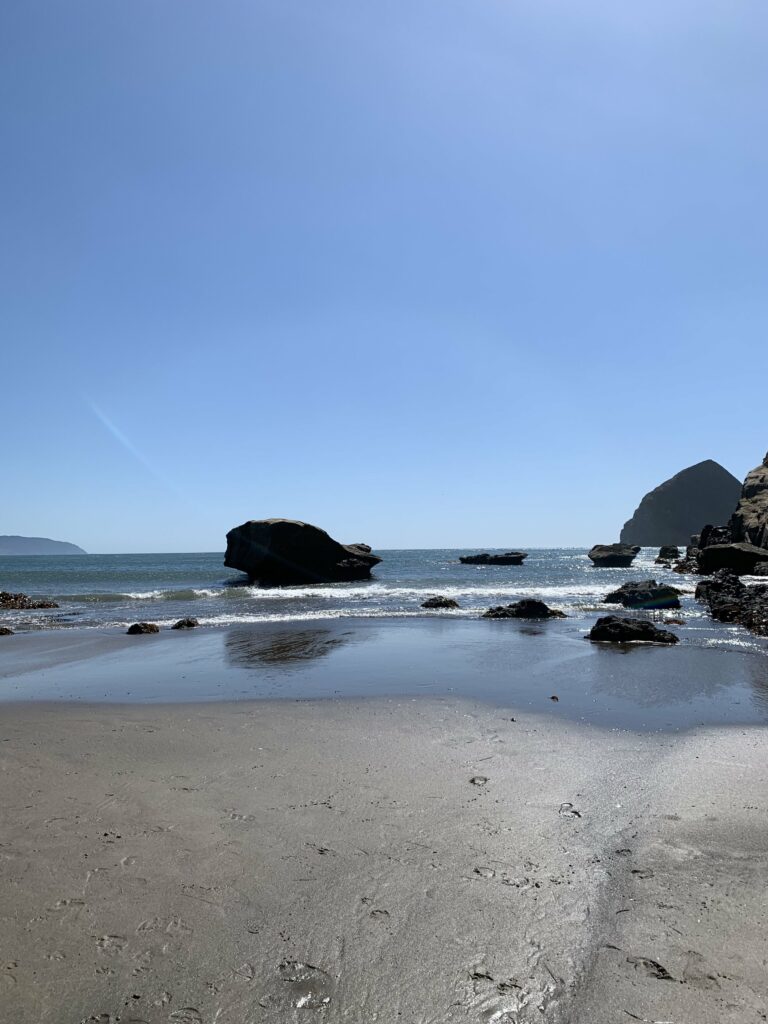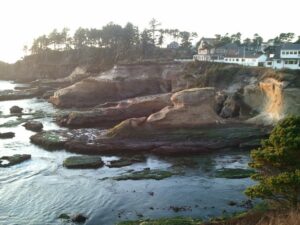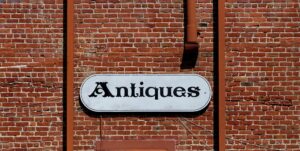by Karissa Courtney
FIRST OFF, WHAT EXACTLY IS A TIDEPOOL?
Tidepools are areas where water collects in the intertidal zone when the tide is out (or low). The intertidal zone is where the land meets the ocean and can be subdivided into three different sections: high tide, middle tide, and low tide. The high tide zone is only submerged at high tide, making it dry and hot. This would be the zone closest to the dry land. The middle zone is where submersion and exposure are equal in amount of time and is further out from shore. The low tide zone is completely submerged except during low tide, resulting in it having the greatest biodiversity of all the zones. It has more favorable conditions for organisms that can’t survive direct sunlight, desiccation (drying out), or changing salinity (salt concentration) for long periods of time.
Therefore, the best place to go tidepooling, is in the low tidal zone, which means you have to pay attention to the tides, otherwise your fun activity could be underwater when you arrive. It’s also important to look up when the tide will be coming back in, because you don’t want to risk getting stuck out on a rock with ocean suddenly surrounding you.
WHY EXPLORE THESE AREAS? WHAT KIND OF ORGANISMS WILL YOU FIND?
The intertidal zone is home to many different kinds of organisms on the Oregon Coast. You will find:
A mollusk is any invertebrate of the phylum Mollusca, typically having a calcareous shell of one, two, or more pieces that wholly or partly enclose the soft, unsegmented body. Octopus and squid are also mollusks!
- Hermit crabs – Small arthropods (an invertebrate, meaning they don’t have bones) that live in a found shell. Other examples of arthropods include land-dwelling insects.
- Sea snails – a type of mollusk that has one shell. They are related to our land-dwelling friends the slug.
- Small crabs – another arthropod. Usually the ones you find in a tidepool are very small and not ones that you would want to eat.
- Sea stars – sea stars (sometimes called starfish, but they are not fish) are related to sand dollars and sea urchins. There are many types of sea stars, ones with many arms and a relative called the brittle star.
- Sand dollars – yep! These are also animals! Usually you just find their dried out shells on the beach, but there is actually a little animal that lives in there.
- Sea anemones – while they kind of look like a plant, these are animals! They have tiny stinging cells on their many arms, which to us feel sticky, but to other animals that it eats, stuns them. Sea anemones are related to corals and jellyfish!
- Barnacles – those hard things you keep walking on? Yep, that’s an animal! It’s actually related to a crab (it’s an arthopod), believe it or not! So try not to crush these guys as you are exploring.
- Mussels – are a type of “bivalve”, which is a designation in the mollusk group of sea organisms. “bivalve” means having two shells, which mussels have! They also are very tasty and are attached to rocks. If you wish to harvest, make sure you have a shell-fish license and know what you are doing!
- Clams – also a type of “bivalve”, also in the mollusk group. Again, these are very tasty but usually live under the sand, and you have to dig for them. Usually if you see these in the tidepools they are already dead, so don’t eat those ones!
- Chiton – never heard of these? They’re very unique mollusks that have just one shell with many plates. They can blend in, so keep an eye out!
- Limpets – these are sometimes called “china hats”, as their shells are round with a point in the middle. These are also mollusks with just a single shell. They look very similar to a snail.
- Shrimps – not the kind you might eat in your salad. Usually the shrimps you will find in tidepools are very tiny and almost completely see-through!
- Seaweeds – there are red, brown, and green seaweeds that can range from being very small, to very large and they actually are macro-algae!
- Algae – algae is actually a type of plant and serves as the food source for many animals
- Tiny fish – you may find some tiny fish swimming around in the pools of the intertidal zone
- Sea birds – can’t forget the flying animals that feed on a lot of these other intertidal organisms! Try not to get pooped on out there.
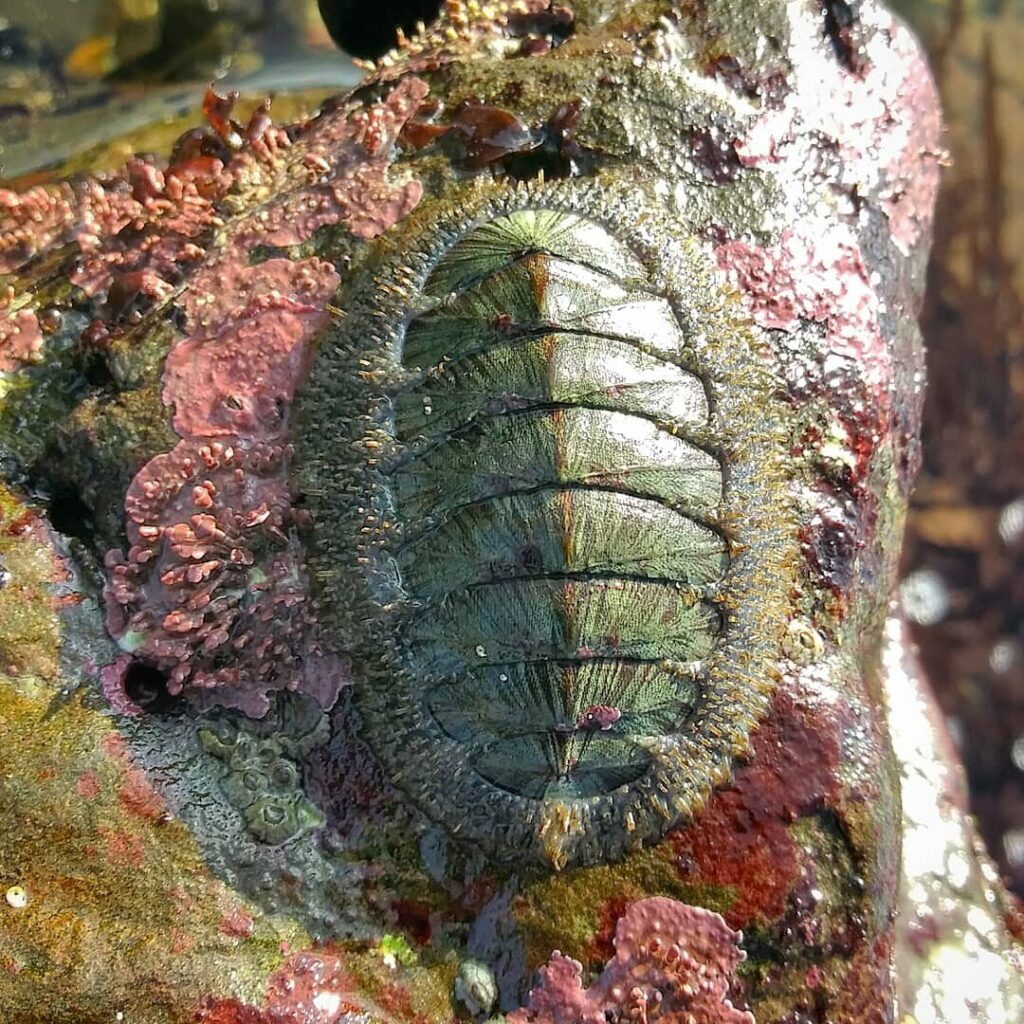
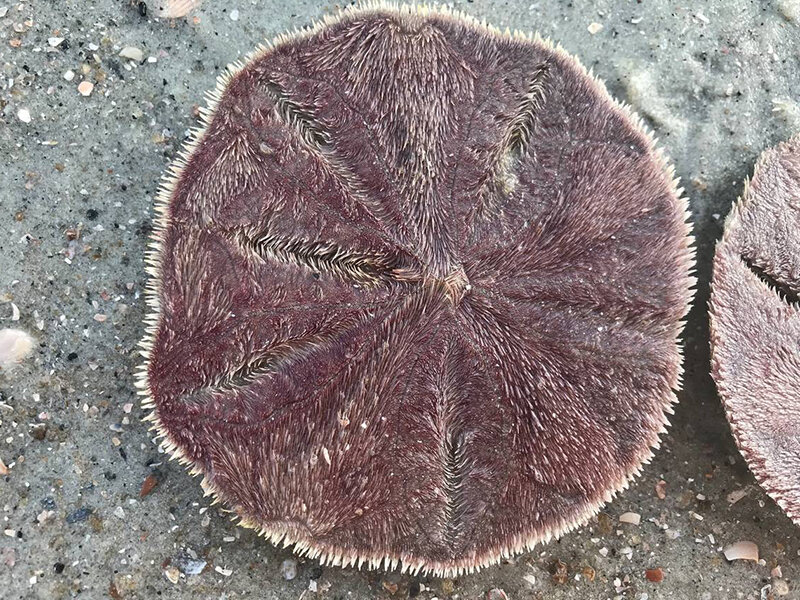

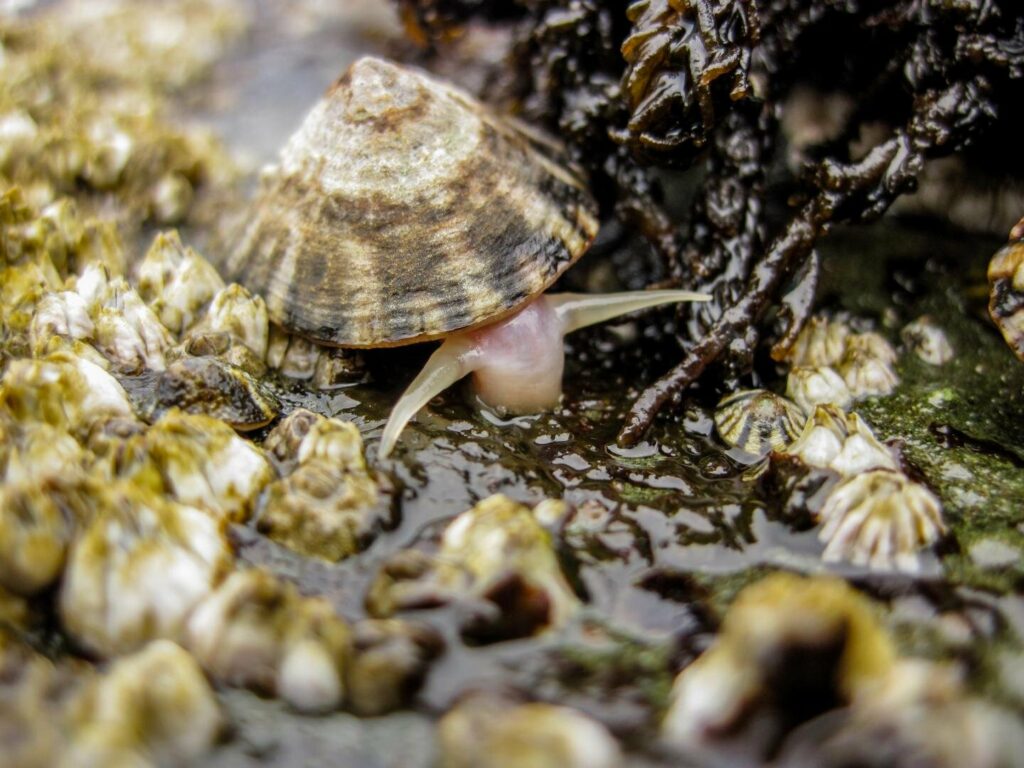
(Read more at the Oregon Conservation Strategy)
WHERE CAN YOU GO TIDEPOOLING ON THE CENTRAL OREGON COAST?
Warning about Depot Bay from Beach Connections:
“The areas around Depoe Bay, Boiler Bay and Rocky Creek are very poor for marine life because of the pounding that it gets from the wave action.” Obey the rules and have fun!
- Fogarty Creek State Park – Depoe BaySome very interesting rock formations and caves here! And at low tide, some great tide pools to explore.
- Devil’s Punch Bowl State Natural Area, Otter RockThe north side of the punch bowl has some tide pools that can be accessed at low tide! It can be hard to get down to, so if mobility is an issue, we would suggest a different area to look at tide pools
- Yaquina Head Outstanding Natural Area, NewportDown the hill from the lighthouse is Cobble Beach, where there are a bunch of rocks and pools to explore. Warning – there is a fee to park here.
- Quarry Cove, NewportAlso near the Yaquina Lighthouse is Quarry Cove. It’s a former rock quarry turned into tide pools. A very unique area with lots to see.
- Seal Rock State Park, Seal RockLots of rocks on this beach, perfect for tide pools! This beach is a little easier to get down to.
- Yachats State Park, YachatsThis has another steep path, so keep that in mind! But again, fabulous pools to check out!
- Cape Perpetua Scenic Area, YachatsA beautiful array of tide pools and critters to to look at. If you miss low tide, you can always check out Devil’s Churn and the Spouting Horn.
- Neptune State Park, FlorenceStrawberry Hill is part of the state park and is where you will find the tide pools. There are stairs down from the picnic area to get to the beach.
SOME RULES TO KEEP IN MIND!
- Check the tides and keep an eye on the waves
- Take only memories! Taking organisms (or organisms that you think are dead) can have harmful ramifications for the environment, not to mention can stink up your car.
- Please, look, don’t touch. Touching can damage, kill, or stress an animal.
- Watch where you are walking (remember you could be stepping on animals)
- If a marine mammal (e.g. sea lion) is nearby, stay a safe distance away
- Make sure you check the local laws and rules around fishing and gathering in the areas that you are going! And if you are fishing, clamming, etc. make sure to have a fishing or shellfish license with you!
- Have fun and be safe 🙂
